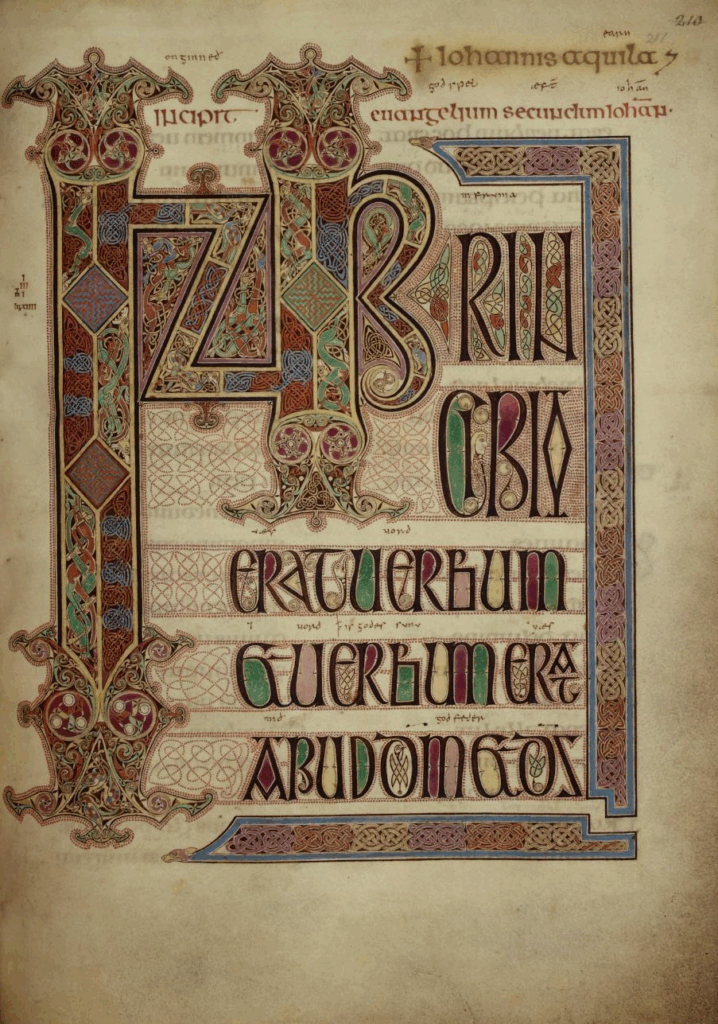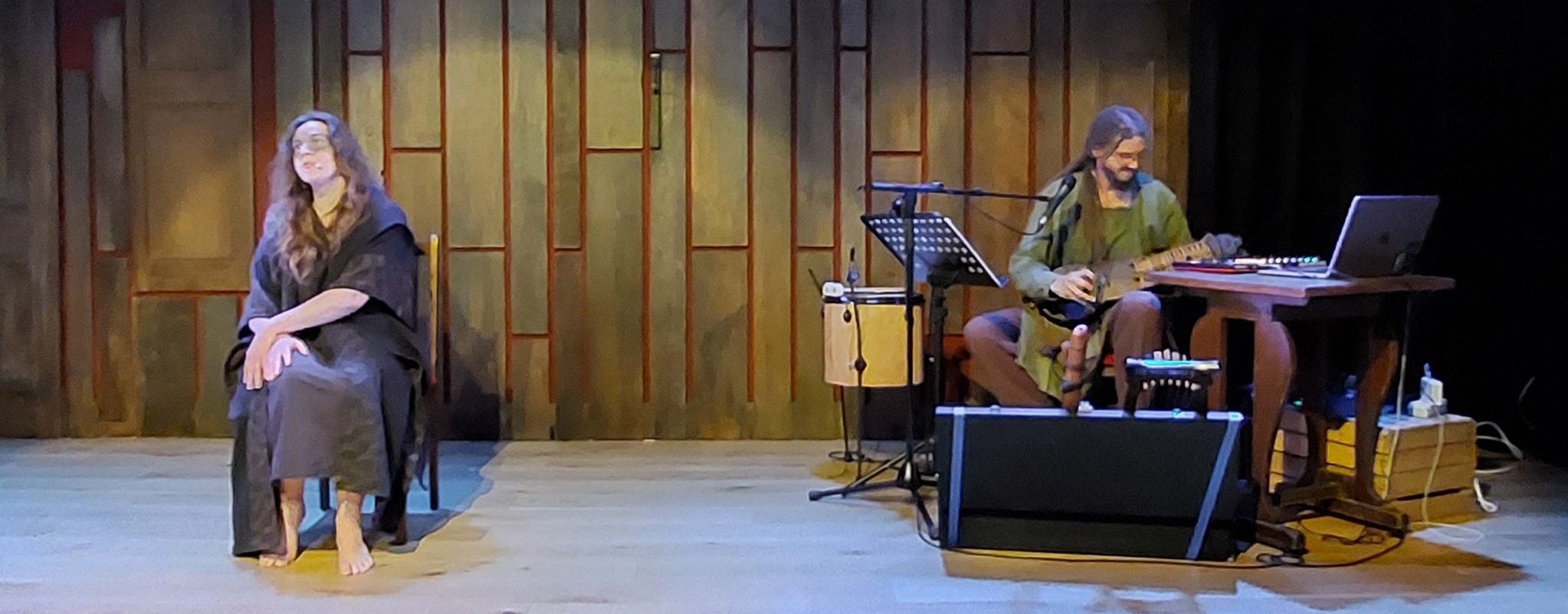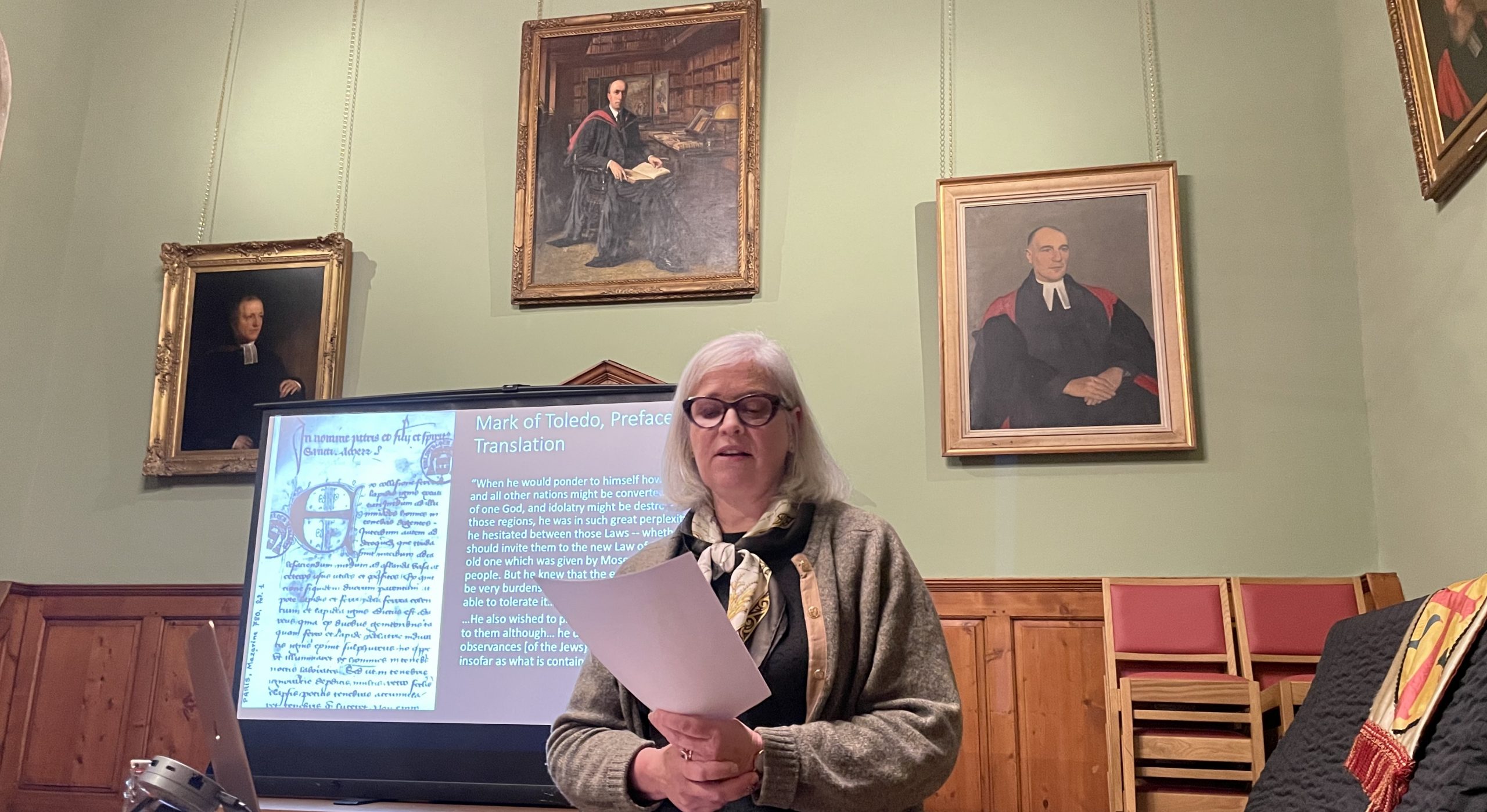By Mathilde Mioche
The Oxford Medieval Manuscripts Group (OMMG) is a collective of eight postgraduate students and early-career researchers who bonded in Oxford over their passion for medieval manuscripts. We host a seminar series which gathers a community of emerging scholars, from the University of Oxford and beyond, around the study of medieval books and the art of illumination.
OMMG seminars take place twice monthly on Friday afternoons. We discuss the most exciting recent research; share our own projects and ideas in a supportive environment; learn from lectures and tutorials given by experienced colleagues; and examine medieval manuscripts together during library visits.
Since the start of our activities in Hilary Term 2024, we have organised over twenty events, created an online reading group, and launched social media accounts on Instagram and Bluesky. This academic year, we welcome our first Honorary Member! We are very happy to announce that James Marrow, Professor Emeritus of Art History at Princeton University, will give a guest lecture in Trinity Term.
Are you a manuscript specialist, a book enthusiast or an admirer of medieval art? We would love you to join us! To subscribe to our mailing list and for all enquiries, please contact: oxfordmedievalmss@gmail.com.

Steering committee:
Martin Kauffmann is Head of Early and Rare Collections at the Bodleian Libraries.
Peter Kidd is an independent scholar of medieval and illuminated manuscripts based in Oxford.
Laure Miolo is Associate Professor in Medieval Latin Manuscript Studies at Wadham College.
Organising committee:
Irina Boeru is a final-year DPhil candidate at St. Hilda’s College. She has worked extensively on humanism, accounts of exploration and travel narratives in French, Spanish and Latin illuminated manuscripts. Her doctoral project focuses specifically on chronicles of the fifteenth-century conquest of the Canary Islands. Prior to her DPhil, Irina completed a BA in Medieval and Modern Languages and a MSt in Medieval Studies at the University of Oxford.
Fergus Bovill is a first-year DPhil candidate in History of Art at Merton College. His thesis, entitled Breaking, Remaking, Reimagining: The Afterlives of Illuminated Manuscripts in the Nineteenth Century, studies the culture of assembling individual illuminations cut from medieval books in albums and collages which proliferated during that period. Fergus holds a BA in History of Art from the University of York and a MSt in Medieval Studies from the University of Oxford. Between his MSt and DPhil, he worked as a Graduate Research Assistant at the Kunsthistorisches Institut in Florenz—Max-Planck-Institut.
Antonia Delle Fratte is a fourth-year PhD student in the History Department at the University of Padua. She holds a BA and MA in History of Art from the Sapienza University of Rome, where she specialised in manuscript illumination and the career of Gustav Friedrich Waagen. Antonia continues to work on Waagen as part of her doctoral project, which analyses the reception of illuminated manuscripts in the nineteenth century. In 2022, she received a CERL grant for cataloguing incunabula at the Royal Library of Belgium and began collaborating with the Vatican Apostolic Library on manuscripts of the Duke of Urbino.
Hannele Hellerstedt is a second-year DPhil candidate in History of Art at Lincoln College. Her research interests include conceptions of gender between the thirteenth and sixteenth centuries, as well as the relationship between Gothic and Italianate architectural styles at the turn of the early modern period. Her thesis, entitled Constructing Virtue: The Female Builder in Late Medieval and Early Modern French Illuminated Manuscripts, examines the motif of the woman-builder within the prolific literary output of late medieval and early modern France, combining text-image analysis with archival research on women on construction sites.
Elena Lichmanova is Curator of Illuminated Manuscripts at the British Library and a final-year DPhil candidate at Merton College. Her doctoral project explores the origins and early history of marginalia in medieval manuscripts, focusing on illuminated English devotional books of the thirteenth century. Elena has devoted most of her research to the Rutland Psalter, held at the British Library, and the rise of Gothic marginalia.
Mathilde Mioche is a second-year PhD student at The Courtauld Institute of Art. Her thesis, entitled Markets for the Macabre: Uncovering New Contexts for the Art of Death in Europe, 1450–1550, investigates the extraordinary demand for macabre art in late medieval and Renaissance Europe. Mathilde is also a Prints and Drawings Study Room Assistant at The Courtauld Gallery. She holds a BA in History of Art from University College London and a MSt in History of Art and Visual Culture from the University of Oxford.
Ana de Oliveira Dias is a historian of early medieval visual and intellectual culture with a specialisation in manuscript studies. She received a PhD in Medieval History from Durham University in 2019 and is now a Postdoctoral Research Associate in the project Crafting Documents, c. 500–c. 800 CE at the University of Oxford. Ana also holds the position of William Golding Junior Research Fellow at Brasenose College.
Celeste J. Pan is a final-year DPhil candidate in Asian and Middle Eastern Studies. Prior to her DPhil at Balliol College, she completed a BA in English at the University of Cambridge and a MPhil in Medieval Studies at the University of Oxford. Celeste works primarily on illuminated Hebrew manuscripts from medieval northern Europe, in particular a liturgical Pentateuch manuscript produced in northeastern France in 1296, known commonly as ‘the Rothschild Pentateuch’. She is especially interested in style, multilingualism and heraldry.
Image: Incipit to the Gospel of John, from the Lindisfarne Gospels. Courtesy British Library, MS Cotton Nero D. IV, folio 211r.









